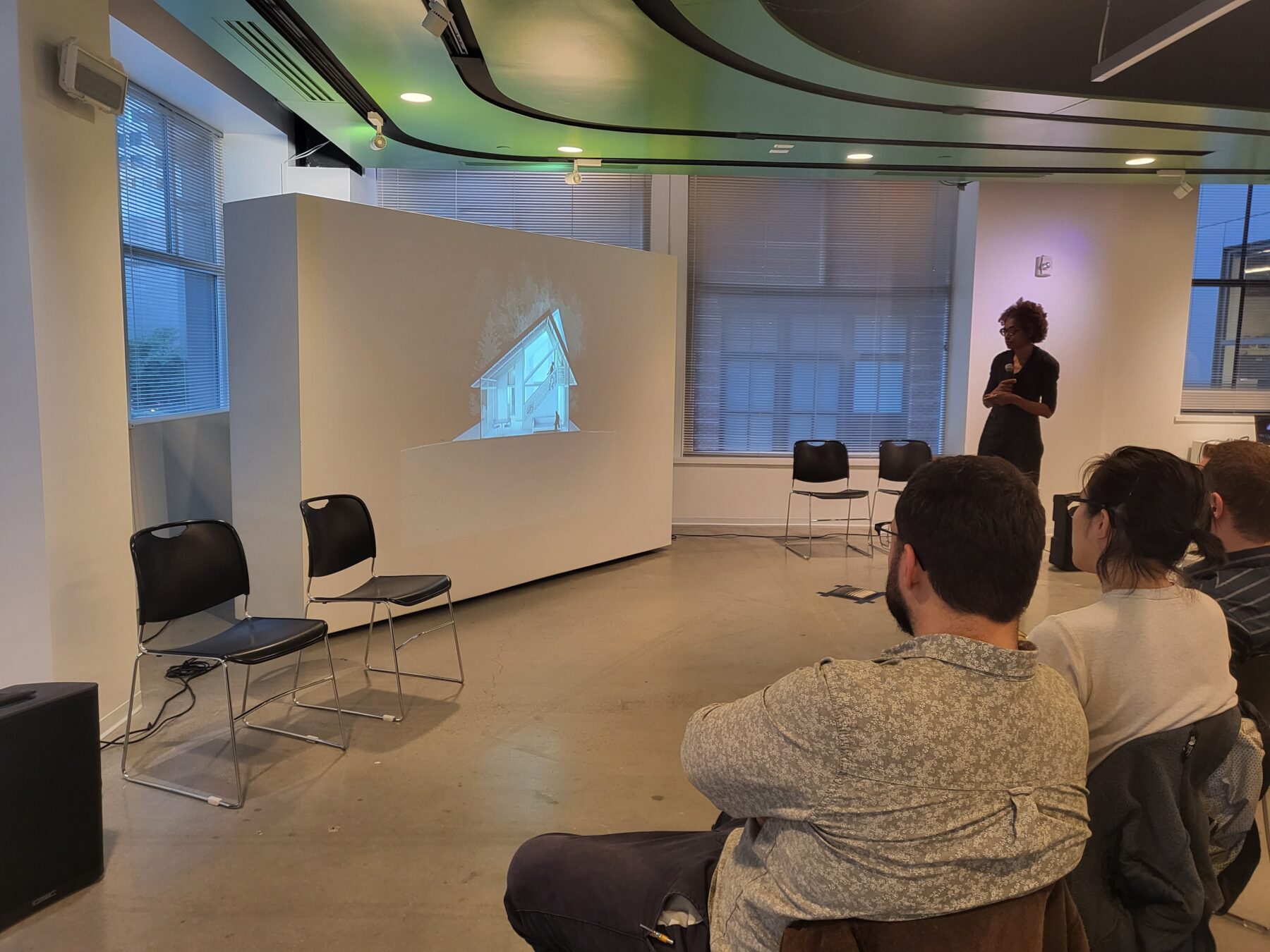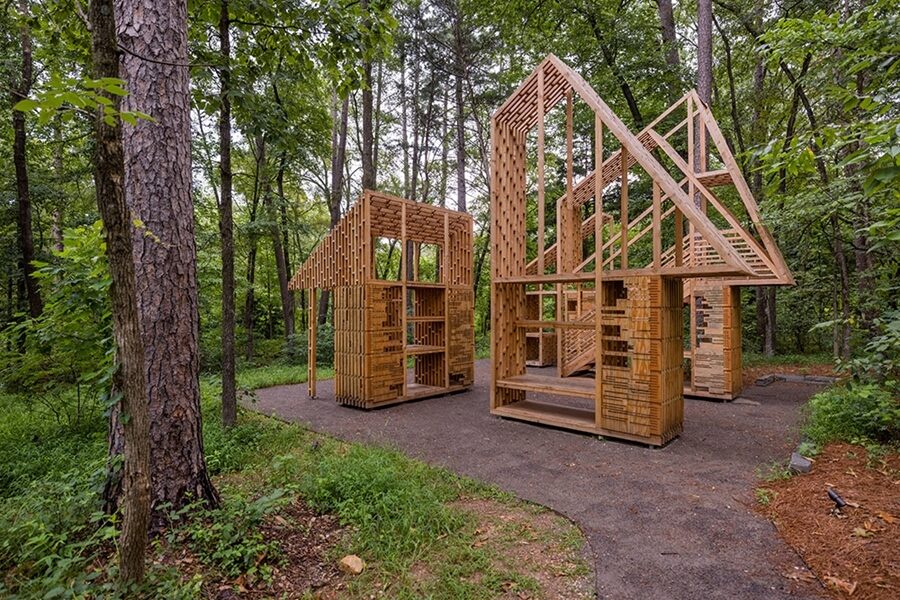Furthering the conversation about architecture and race

The first step to change is acknowledging the problems with current conditions. Often, race functions as an “elephant in the room”— a factor with a great impact whose presence remains unacknowledged.
At an event called “Architecture & Race: A Panel Discussion” on September 28, panelists and members of the BSA community sat down to speak the truth together.
The goal of the evening was to explore the absence of race in dominant discourse around design. Danyson Tavares Assoc. AIA, Adjunct Instructor at Wentworth, served as moderator. Panelists included Yolande Daniels, Associate Professor at MIT, Jasminka Udovicki, Ph.D, Professor at MassArt, Laura Schmidt, Adjunct Professor at the Wentworth Institute of Technology, and Matthew Akira Okazaki, Assistant Teaching Professor at Northeastern University.
Daniels kicked off the speaker presentations by telling the story of how a project with studio SUMO, the New York-based firm she co-founded, led her to research the histories of African-American communities in Arkansas. She began cataloguing the forced expulsions of Native and Black inhabitants that she discovered as a result. This culminated in Totem House, a prototype house located along the Orchard Trail in Bentonville, Arkansas. With its structure engraved with information Daniels and her team uncovered in their research, it functions as a place that people can enter, move around in, and experience while reading about the histories of oppressed people and associated timelines.

The histories she uncovered “became something that was layered onto the house,” she said.
Udovicki, who teaches a class at MassArt called “Why Haven't I Learned This Before?” focusing on discrimination in housing policy, brought the perspective of a social scientist. Her talk included an analysis of redlining and other forms of segregation that stemmed from government policies in the latter half of the 20th century.
Okazaki discussed the lack of representation of minority architects in academia and the profession, pointing out that many impediments exist for marginalized people who are seeking a degree, such as cost and overall program culture. “We must constantly ask ourselves who uses and lives in our built environment, and who the people are who design this environment,” he said.
During the panel portion, the speakers brought a wealth of similar yet diverging experience to the table. Despite their work in different fields and institutions, all spoke of a similar feeling of alienation. “I feel quite isolated teaching what I teach,” Udovicki confessed. They shared their attempts to enact small changes in hopes of ultimately changing the field's culture into one that is more inclusive and poised to create a built environment that benefits more people, though all acknowledged that there is a long way to go.
The question and answer portion of the event opened up the discussion to the audience. Asked why the focus of the presentations was on harmful current conditions, the panelists warned against complacency. Moderator Tavares spoke about the need to “shift the momentum” and avoid falling into a pattern of dismissing the need for further change after some progress is made.
Many other audience members shared their own perspectives. Educators discussed the struggle to keep students from diverse backgrounds in the profession, and others talked about their personal journeys and experiences as minority students and professionals. Their stories encompassed a good deal of pain, as well as a significant amount of hope.
As the evening wrapped up, many attendees expressed how cathartic it was to hear these issues spoken about with care and openness. Addressing the students in the audience who had spoken up during the final portion, Daniels said, “It’s really great to hear from students. Know that you can talk about these things.”
For more resources or to get involved, learn about BosNOMA and the EDI Network.
To learn more about the realities of diversity in the profession and the academy, explore NCARB by the Numbers, the interactive version of National Council of Architectural Registration Boards’ 2021 report on the professional pipeline.

